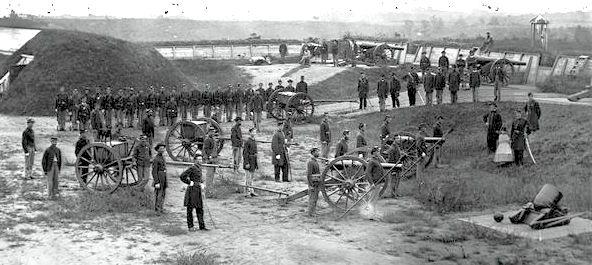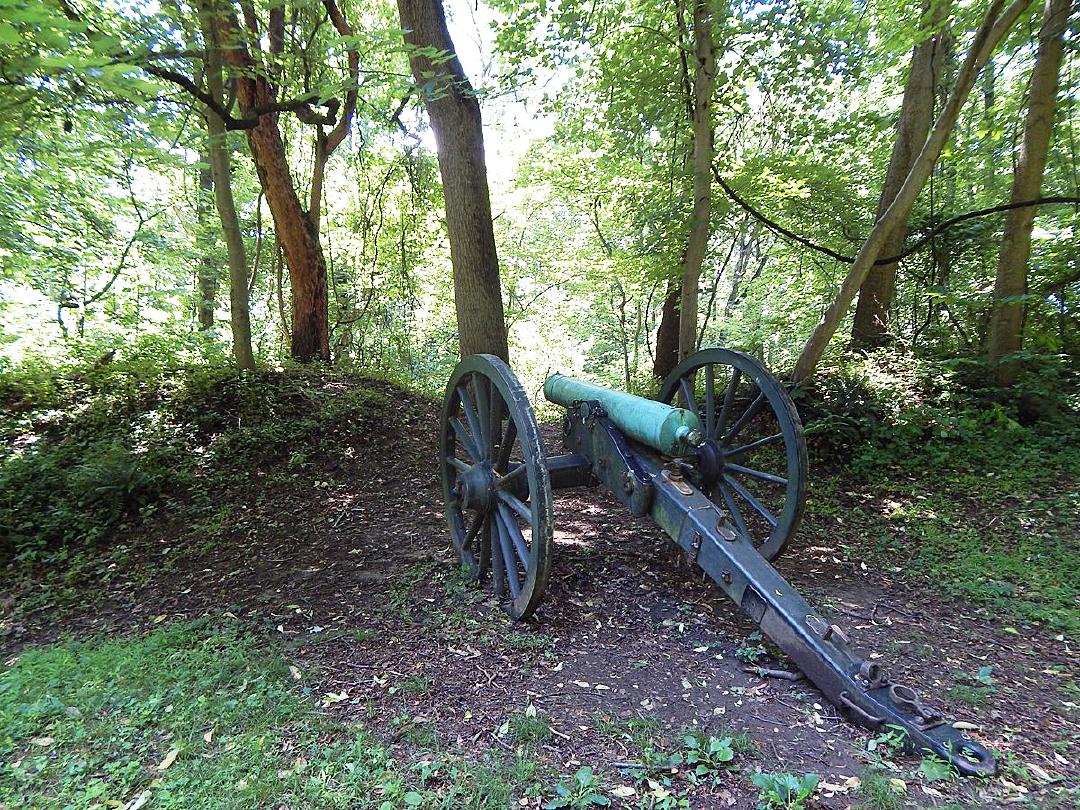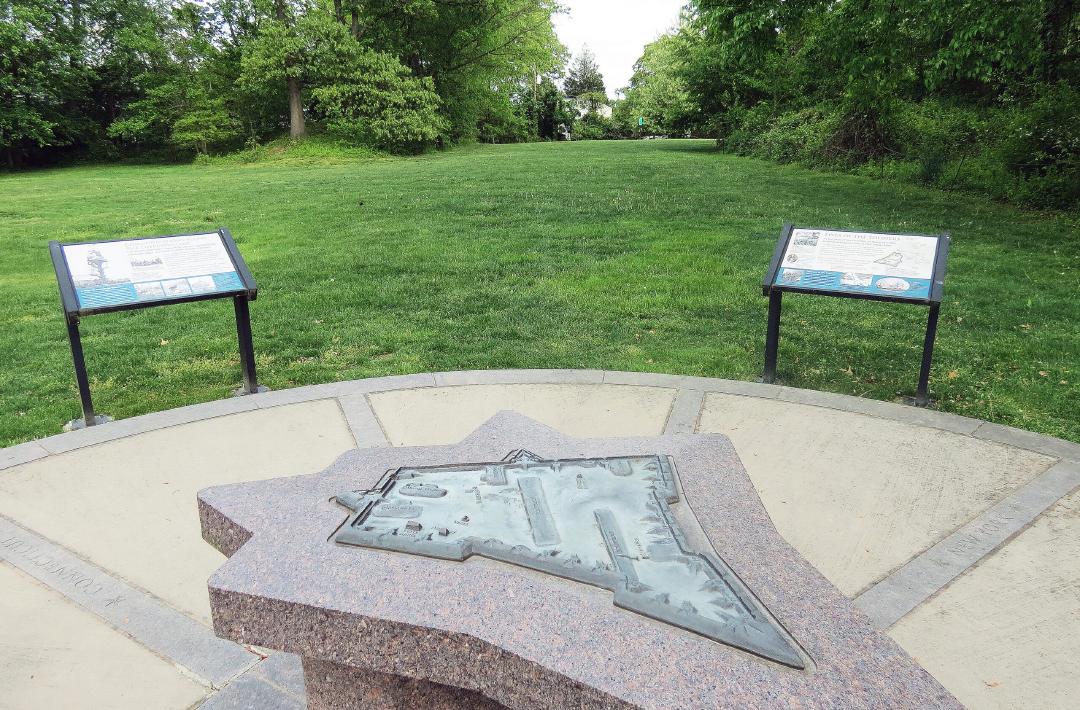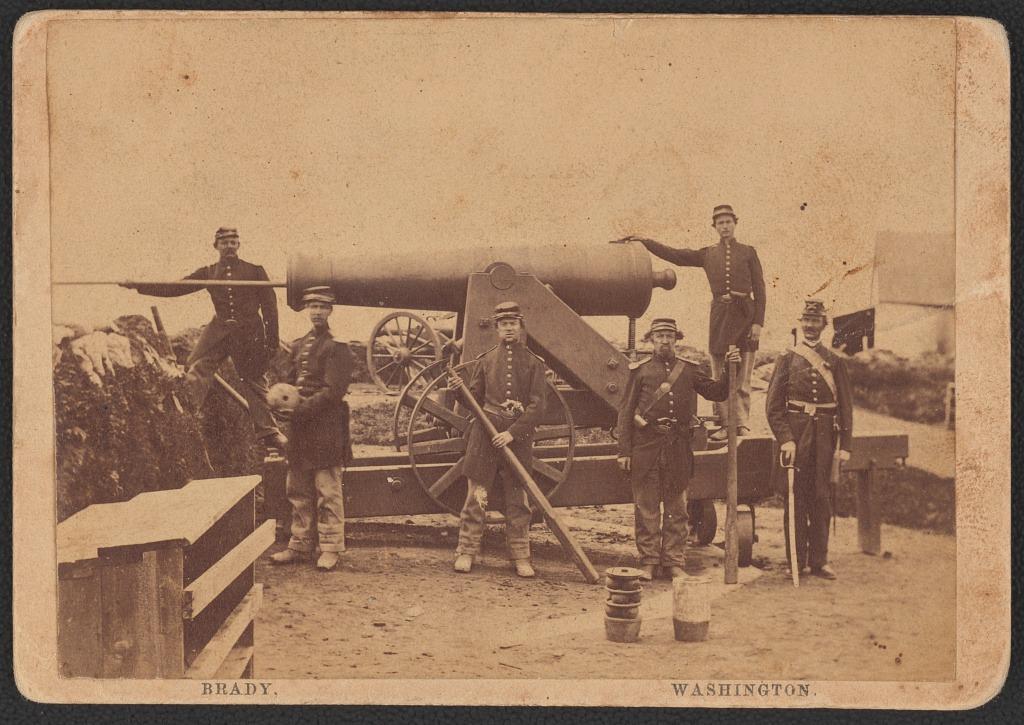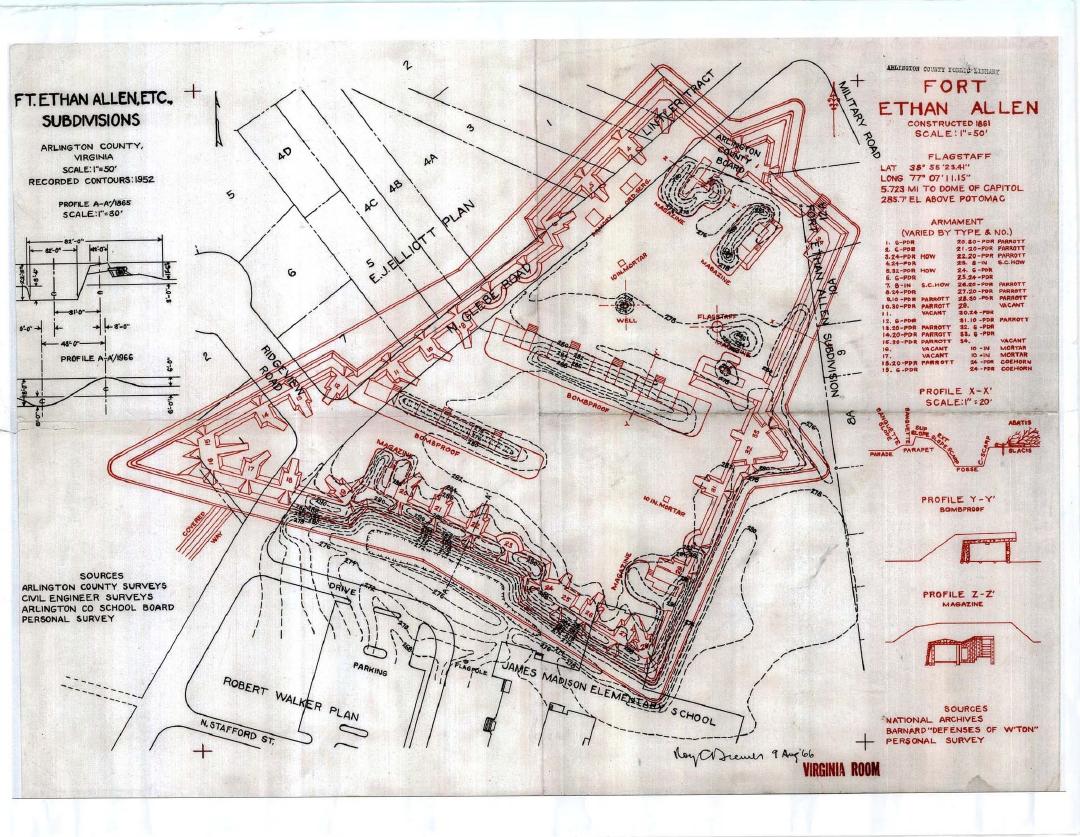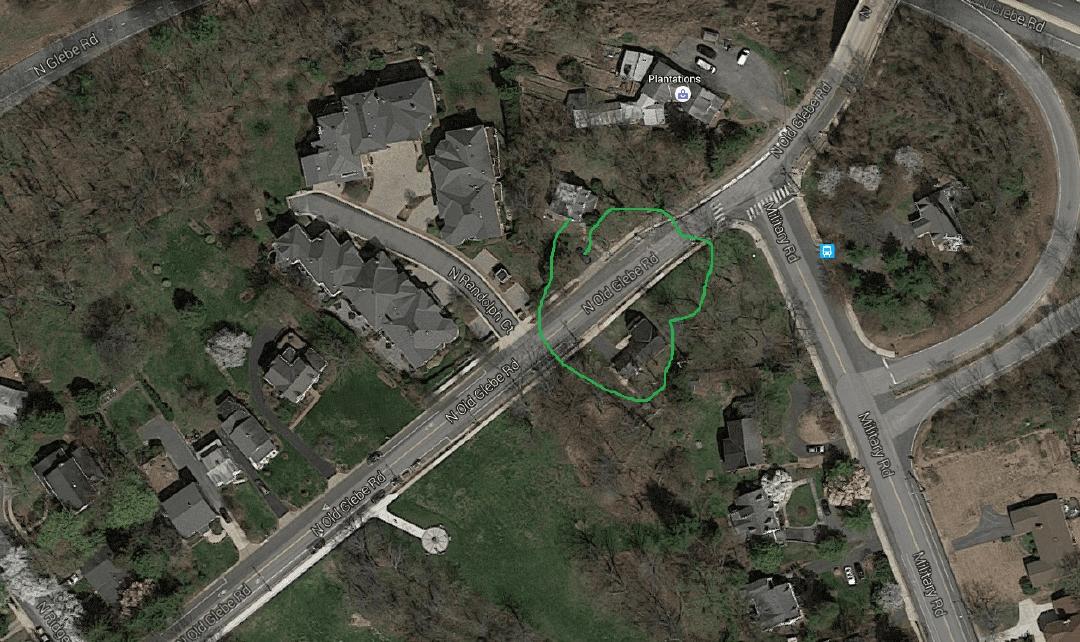Fort Ethan Allen
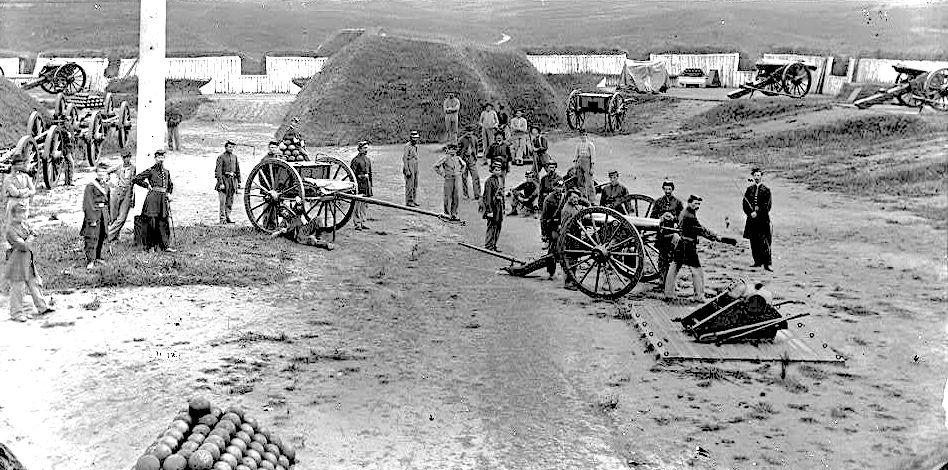
The fortification was a large bastion-style fort that was located on the property of Gilbert Vanderwerken.
Fort Ethan Allen was built by 2nd Vermont Infantry soldiers in 1861 on land owned by Gilbert Vanderwerken. The earthwork fortification was part of Washington, D.C.'s Civil War defenses. The fort was named for Revolutionary War hero Ethan Allen, who, with his militia force, captured Fort Ticonderoga in upstate New York.
The Union Army erected the fort in September 1861, shortly after their defeat at the First Battle of Bull Run (Manassas) in late July. The fort was a sizeable bastion-style structure intended to guard the approach to Chain Bridge.
Built following the directives of General John G. Barnard of the United States Army Corps of Engineers, the fort was constructed like other Northern Virginia defenses. The Chain Bridge forts, namely Fort Marcy and Fort Ethan Allen, played a crucial role in protecting the northern flank of the Arlington Line.
Fort Ethan Allen stood out among these forts due to its strategic location and size, making it an essential component of Washington's defense system. During the American Civil War, the Arlington Line was a set of fortifications built to protect Washington, D.C., from enemy attacks. Fort Ethan Allen had a series of trenches and roads that connected it to nearby forts and the Potomac River.
These trenches and roads moved troops and supplies between the different fortifications. The fort was designed with four primary sides, with additional corners on the north and east sides. It had a perimeter of 768 yards and could hold 34 guns. Inside were two bomb-proofs, ammunition magazines, and other structures to support the fort.
The fortification remains can be found in Fort Ethan Allen Park, which is located in Arlington County. The fort still has several major aboveground features, including extensive earthworks, one bombproof, gun platforms, and traces of magazines. The fort's south face has a centrally located bombproof, and the remaining north face structures are still visible, along with the fort's interior structures. An outlier trench, designated as a local historic district by the Arlington County Board, can be found to the southwest of the fort.
Images

